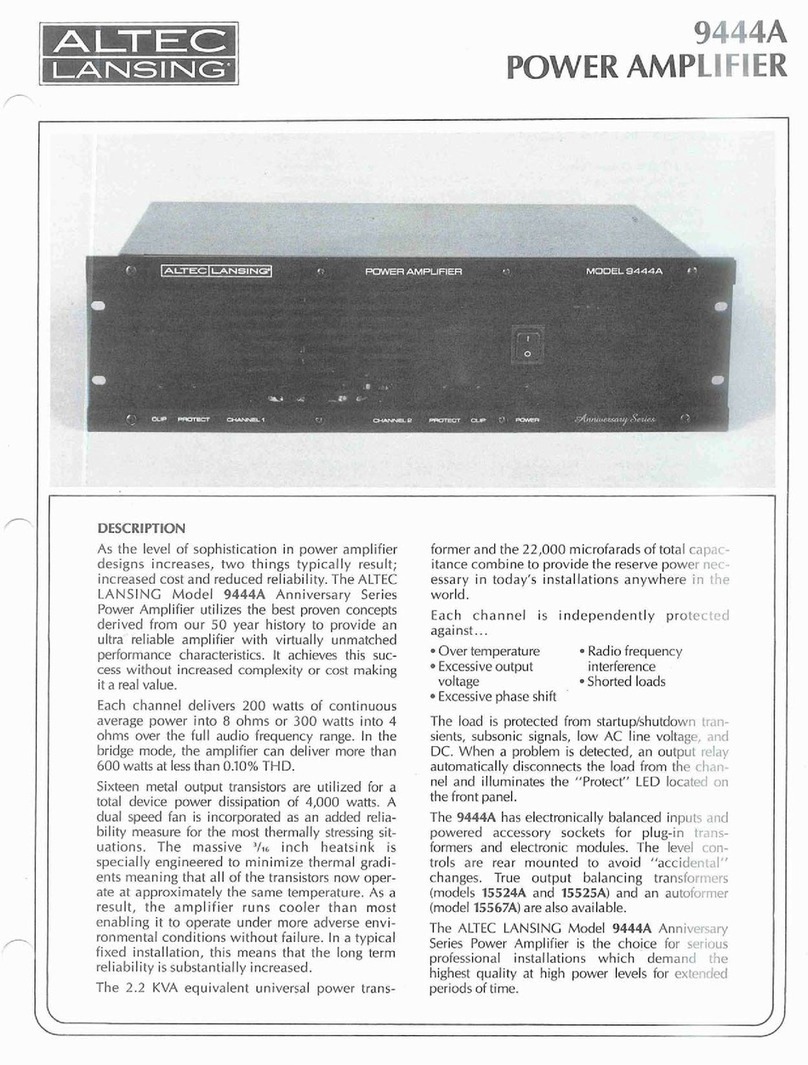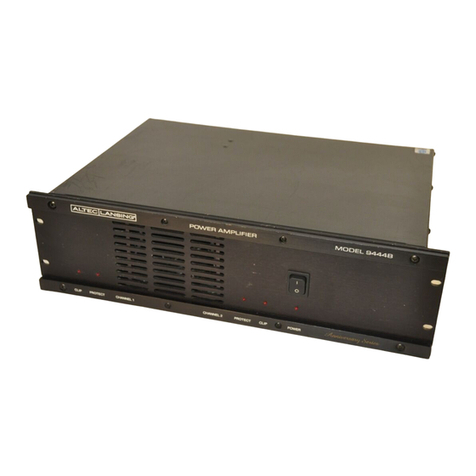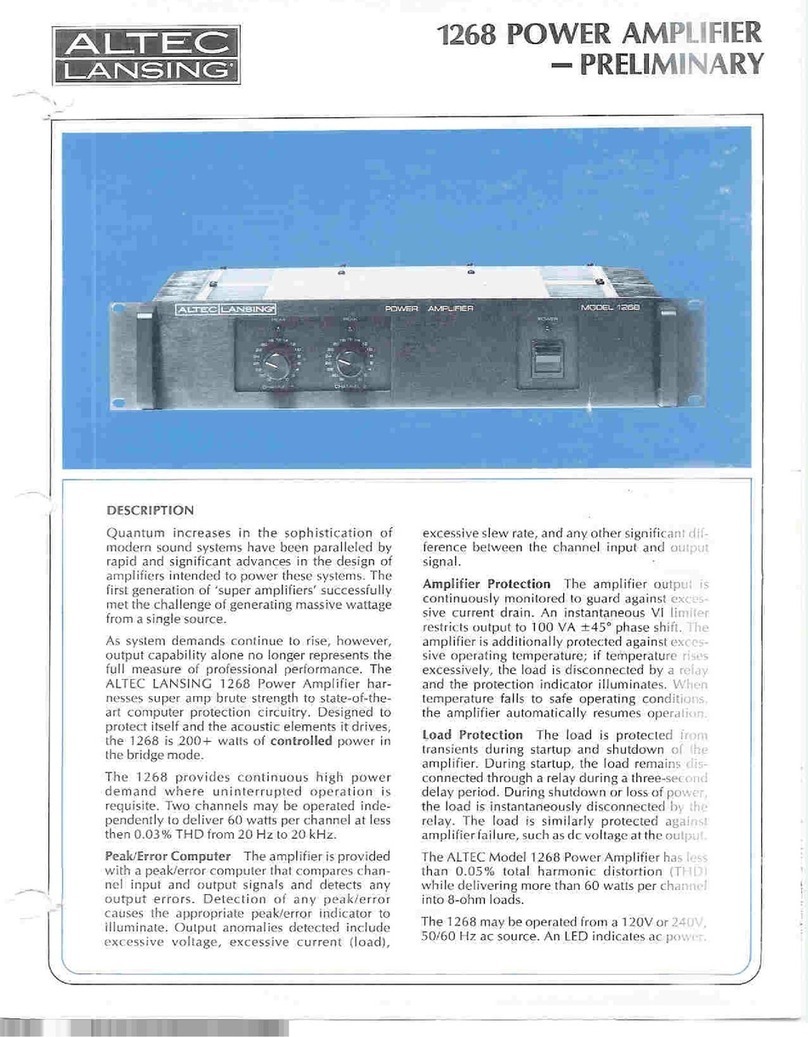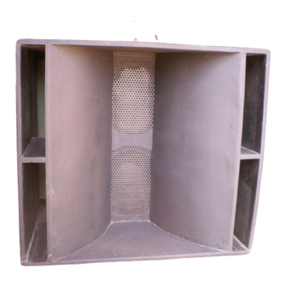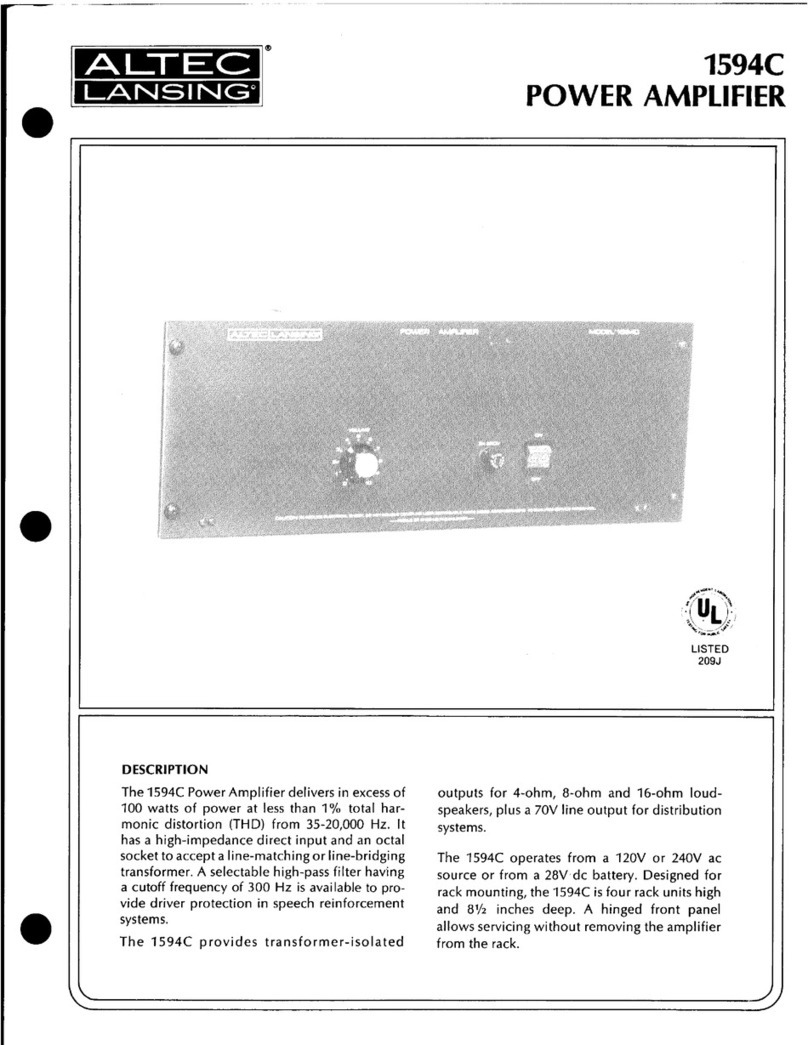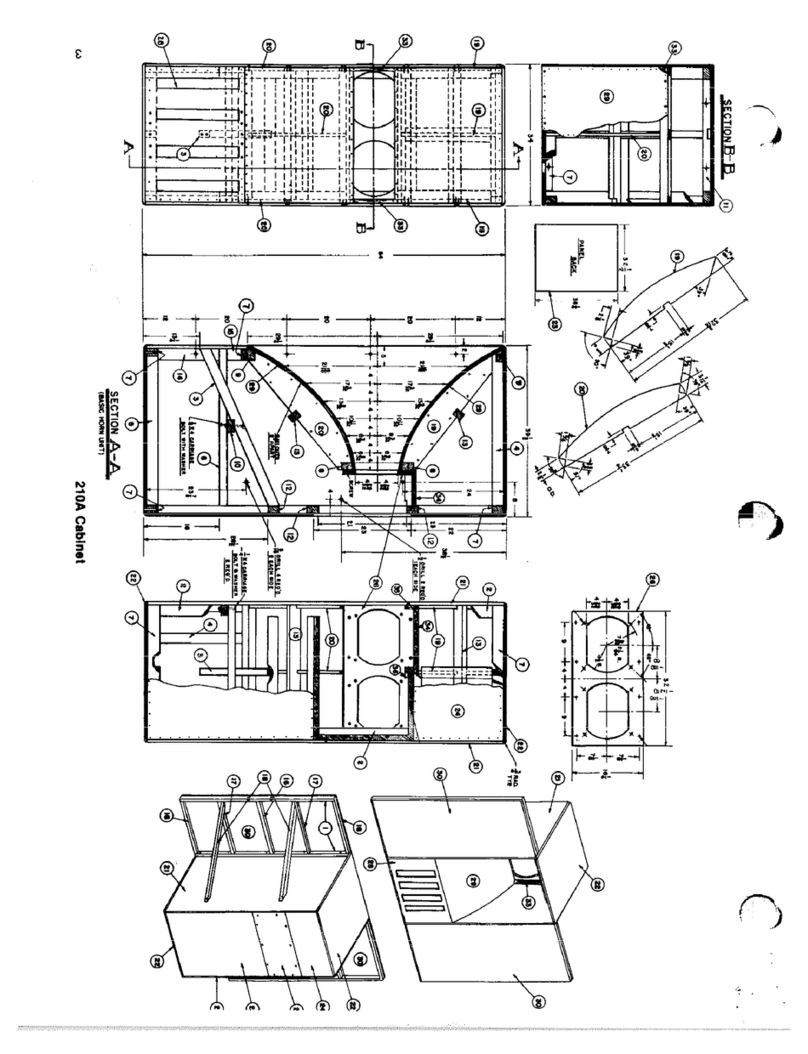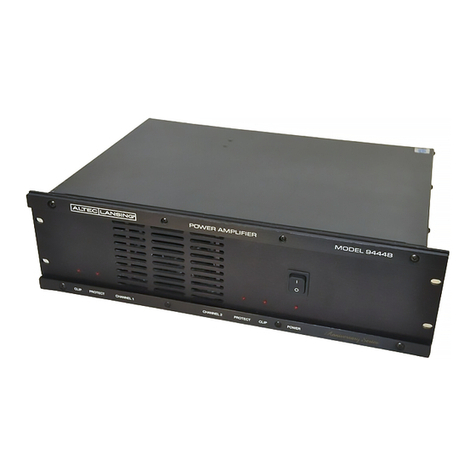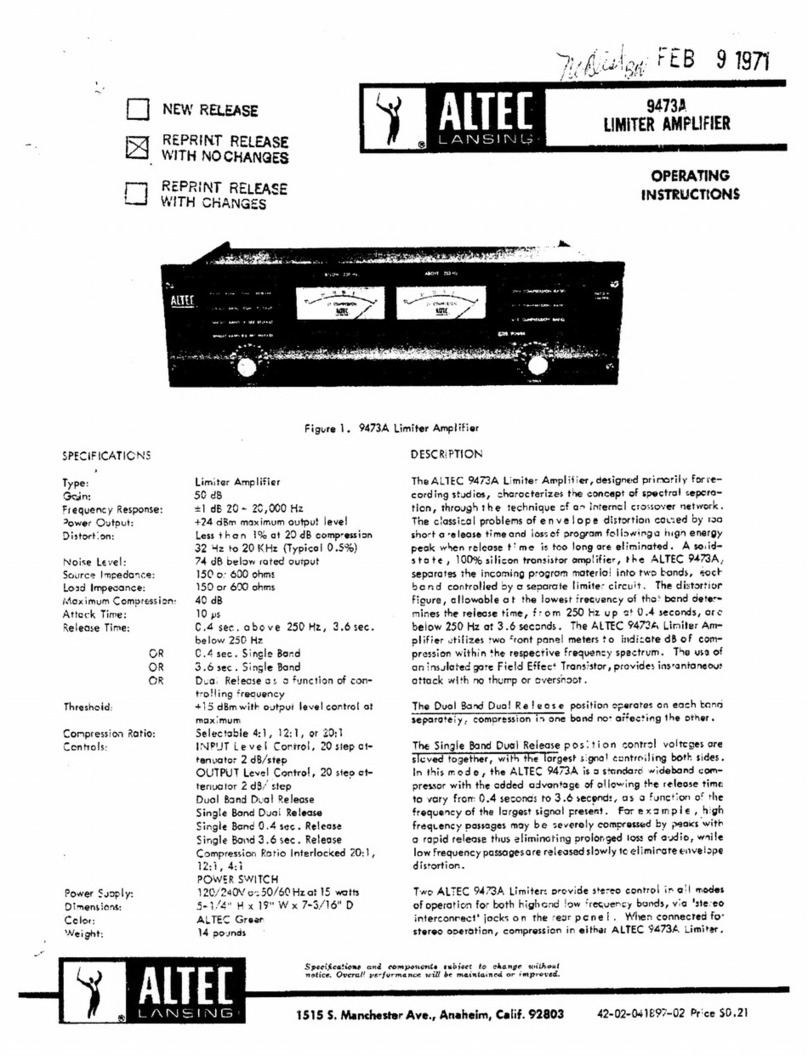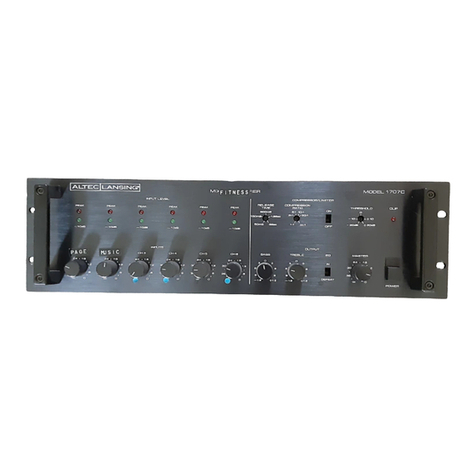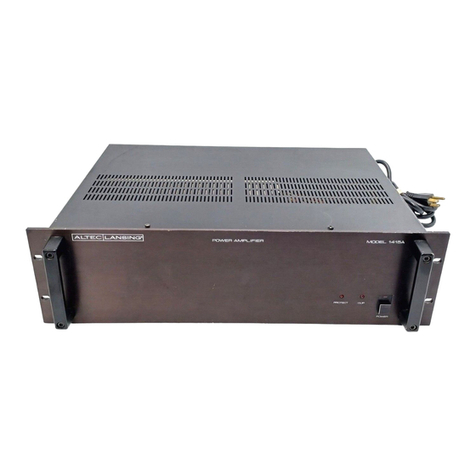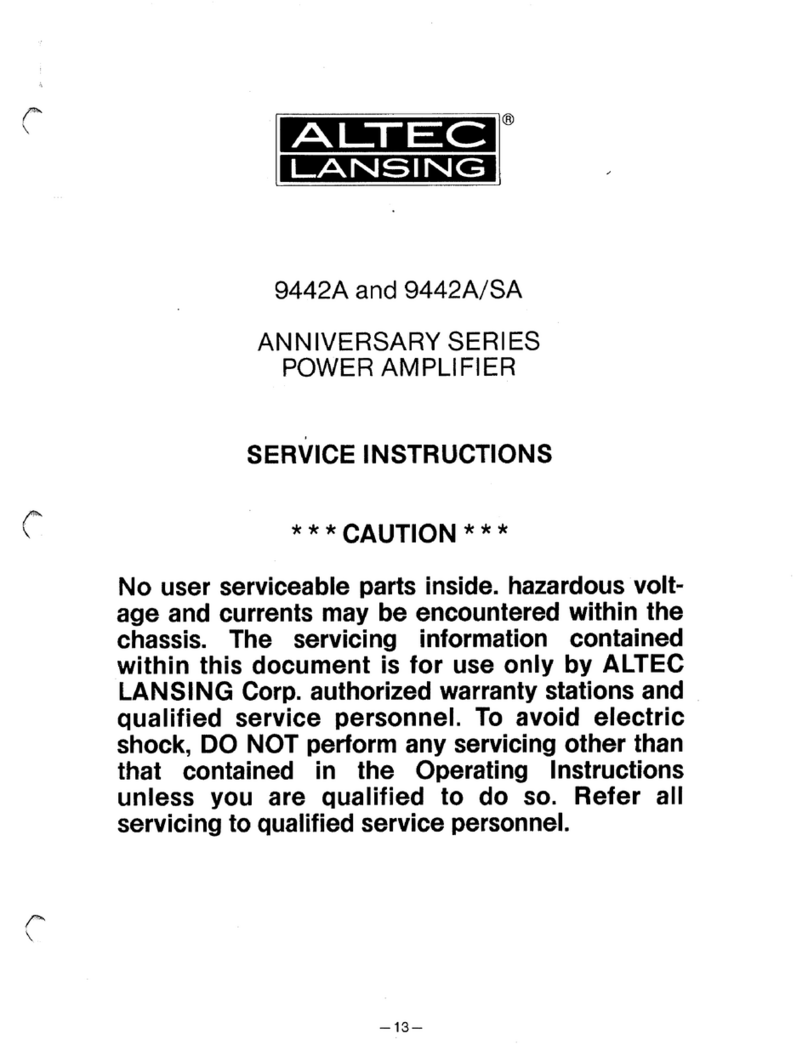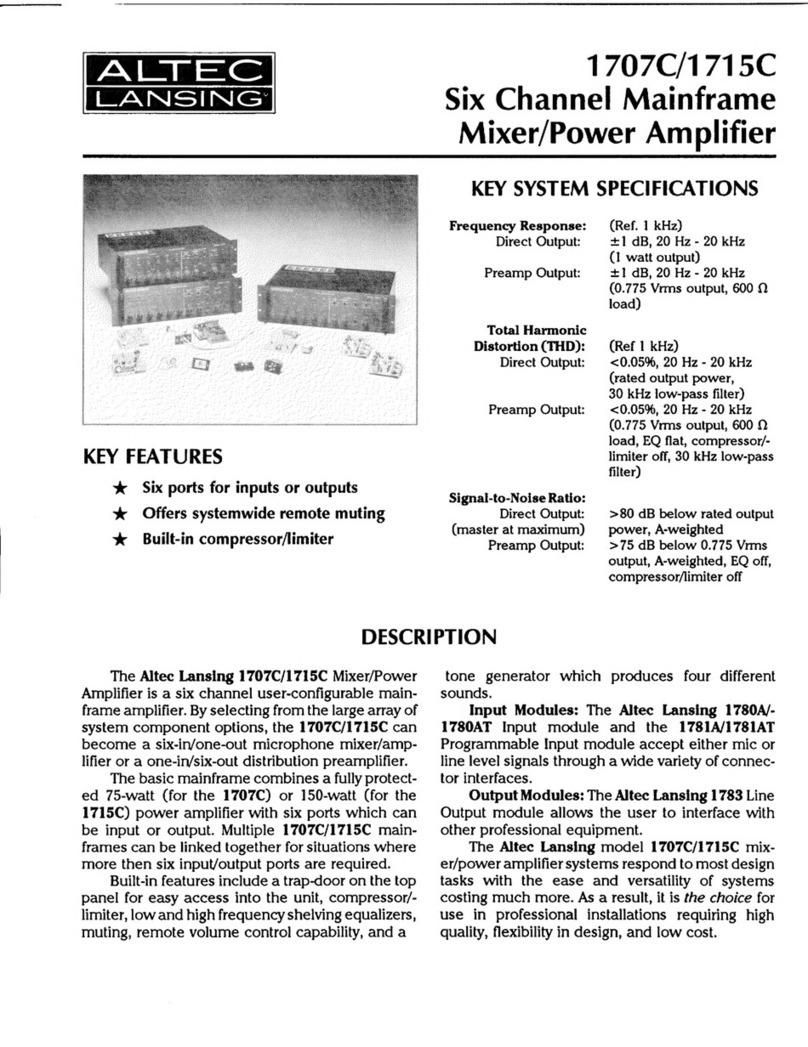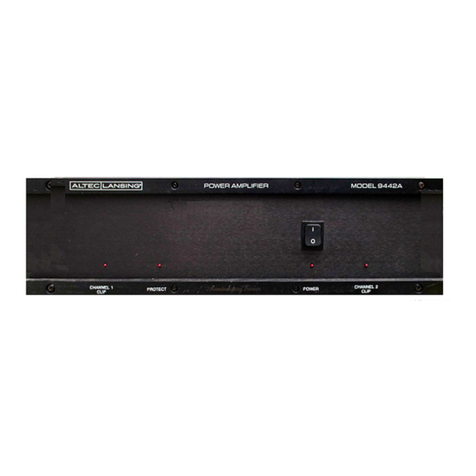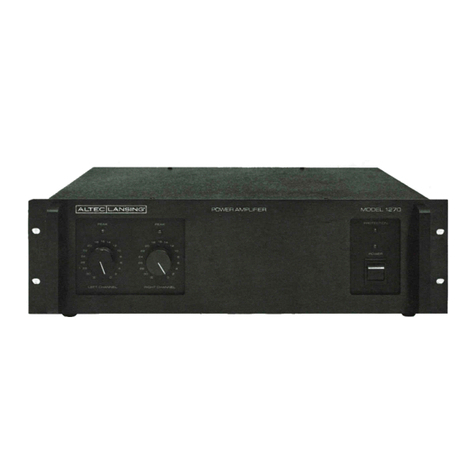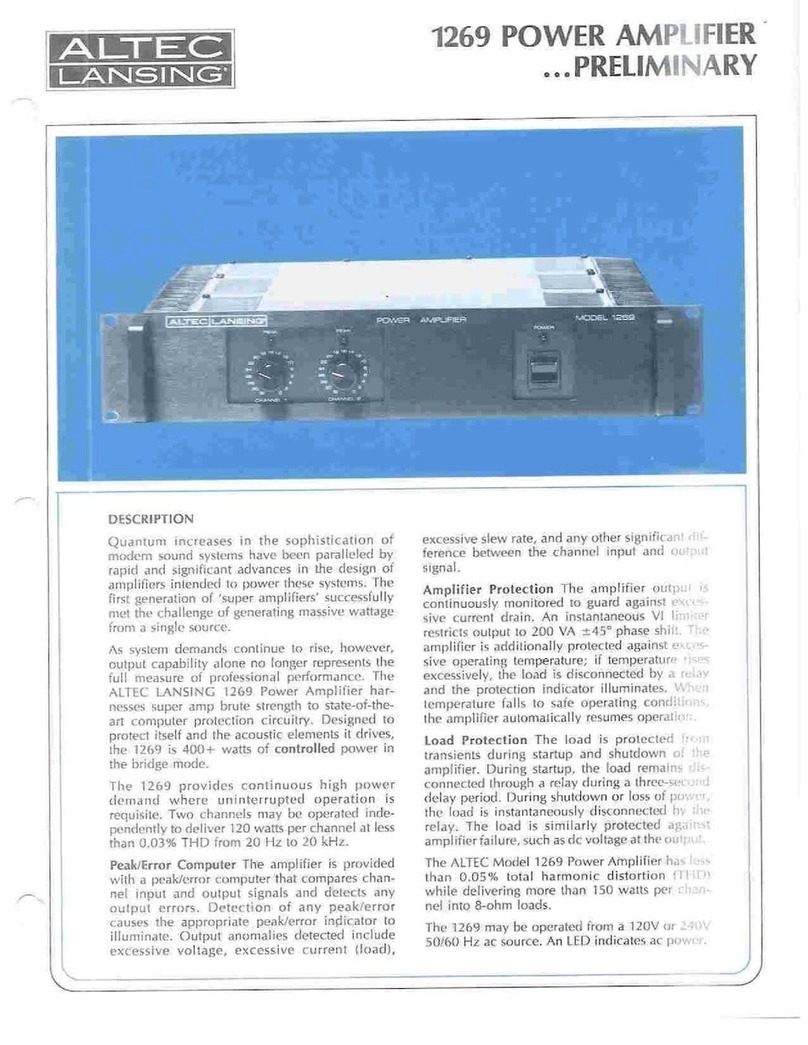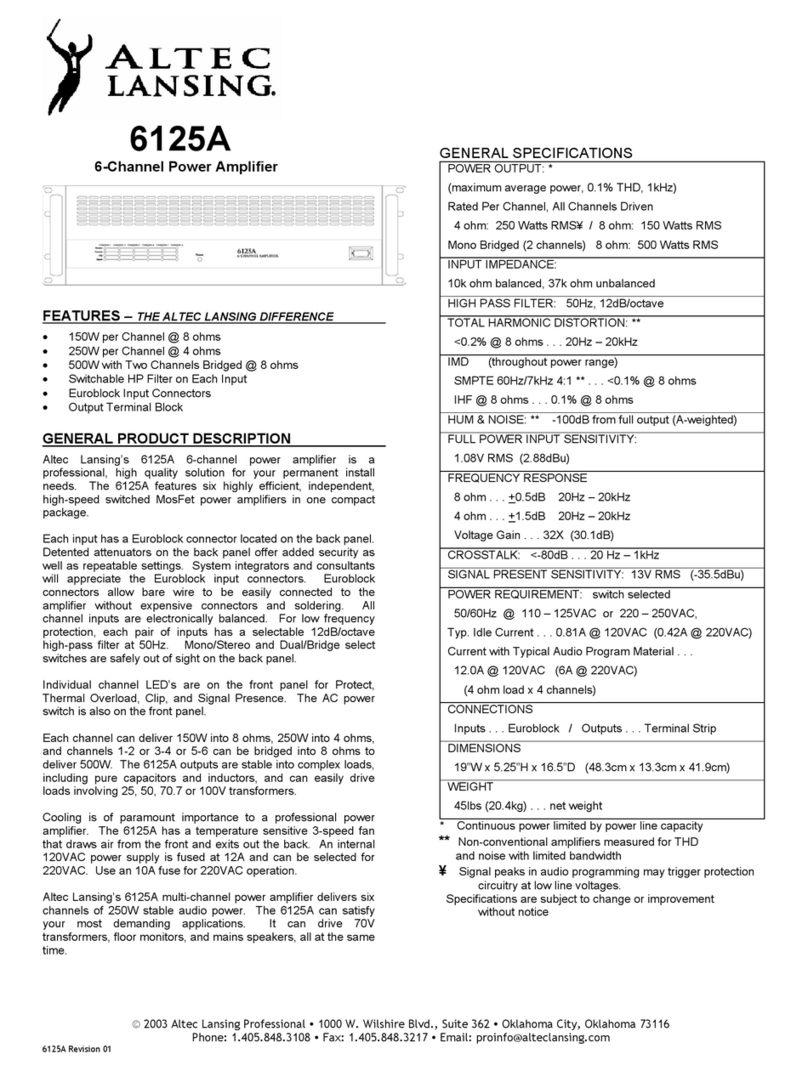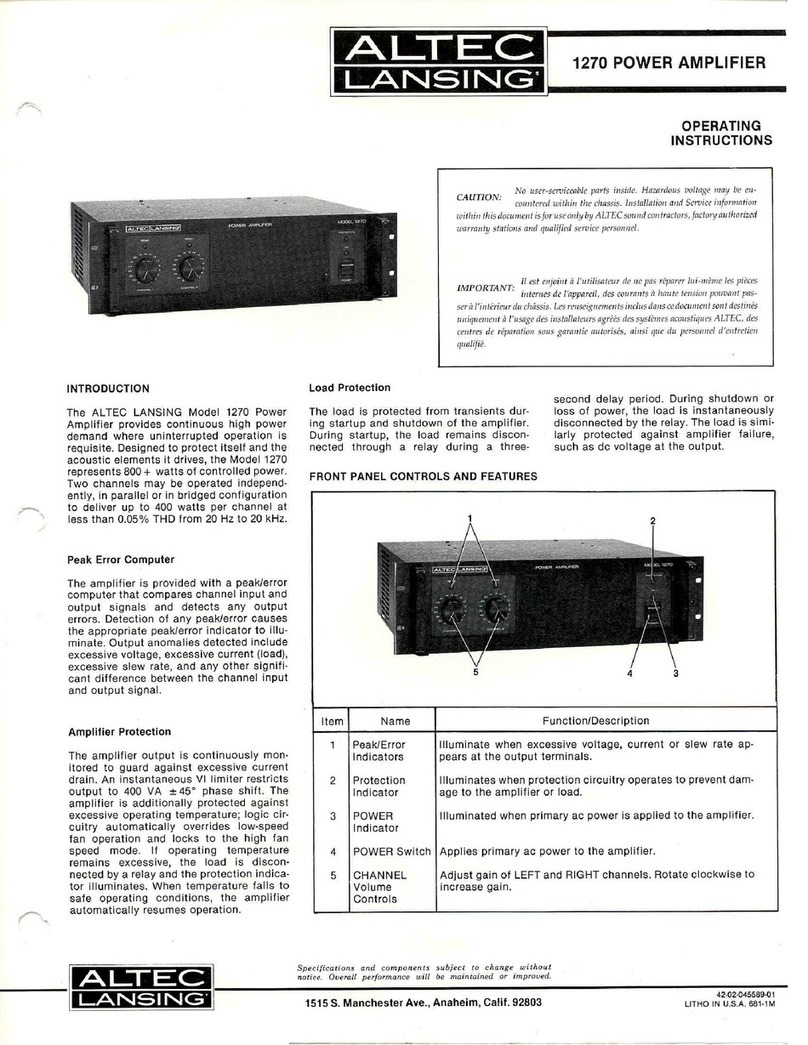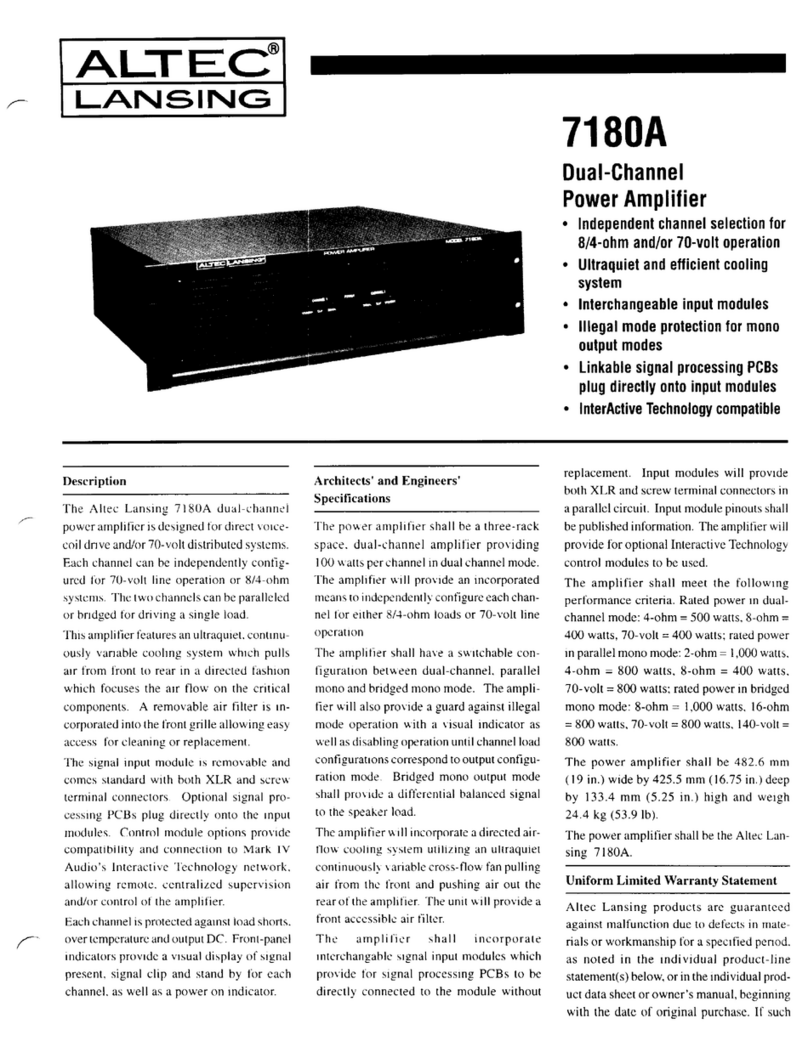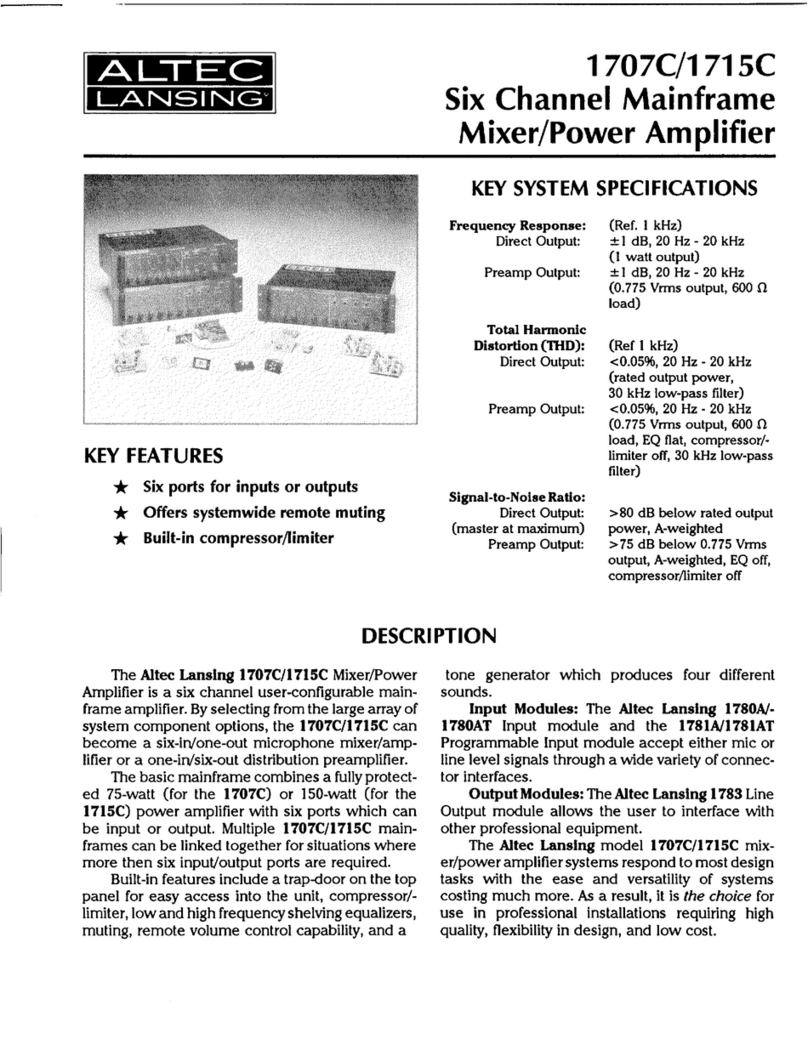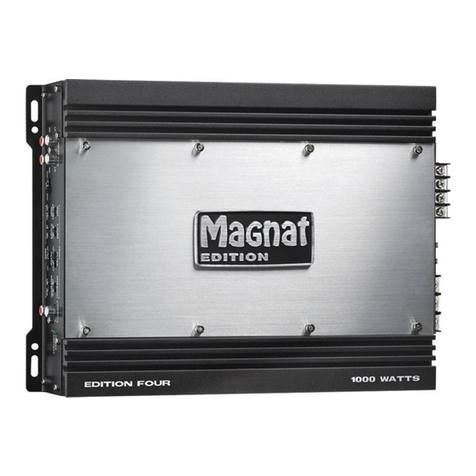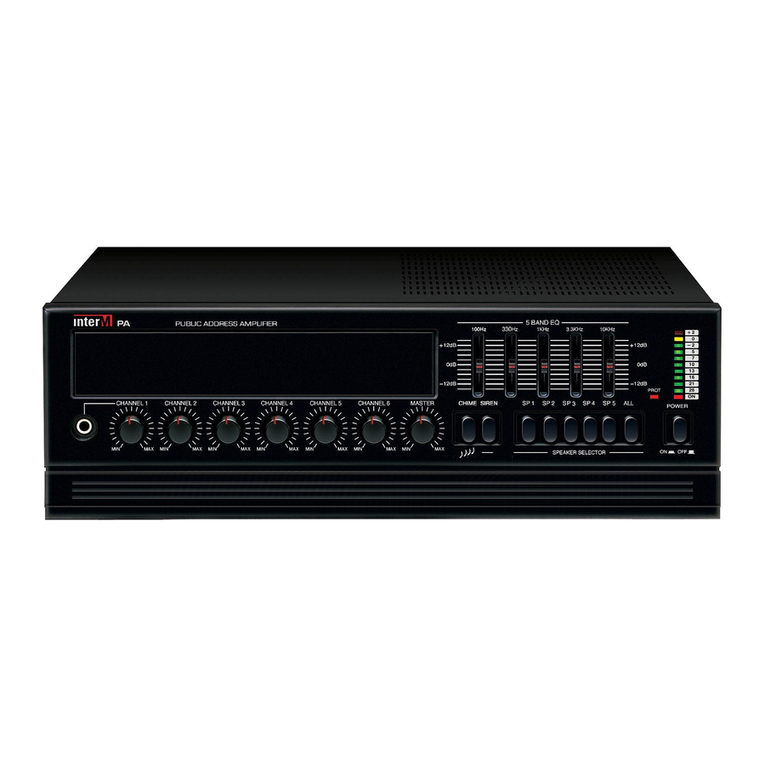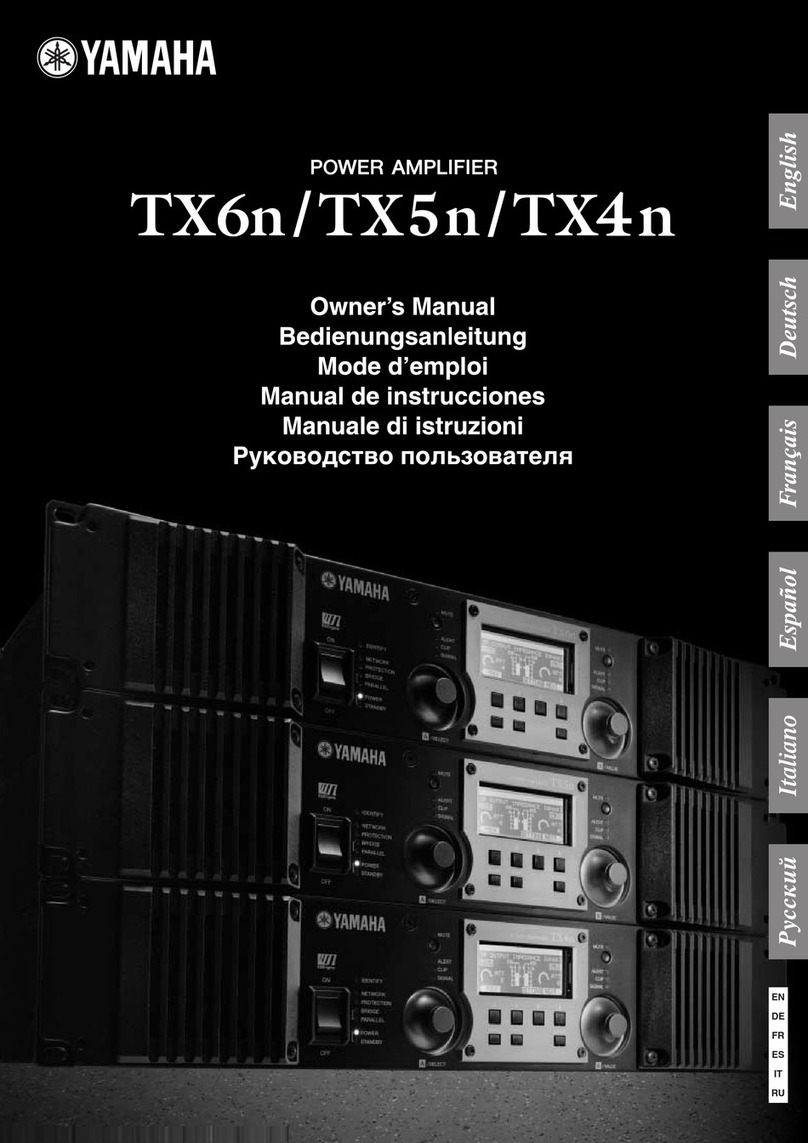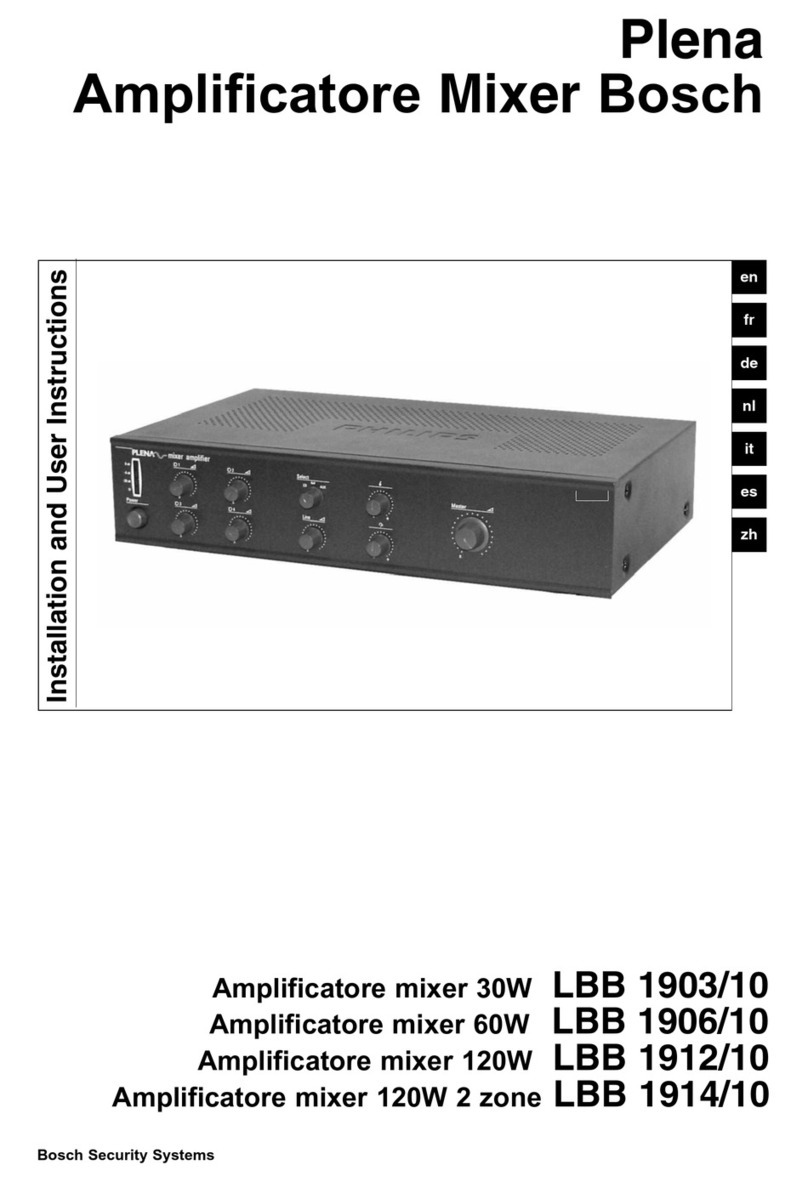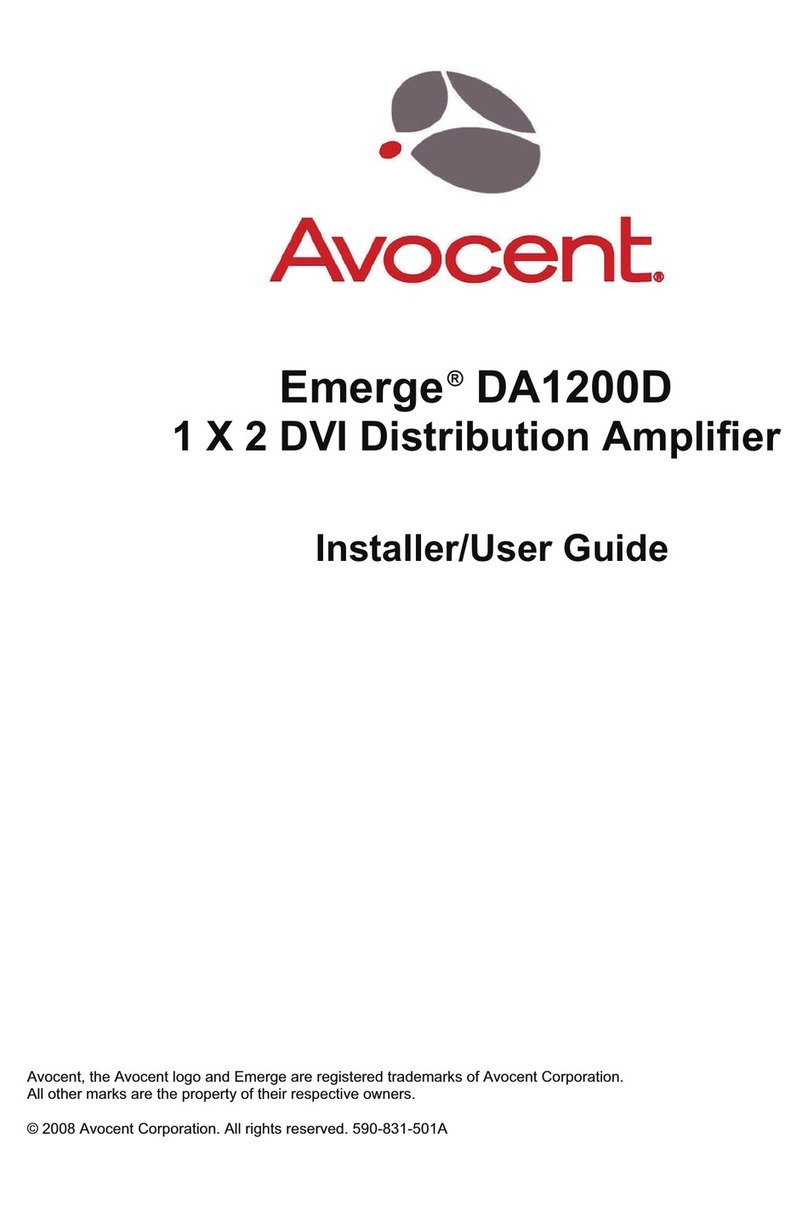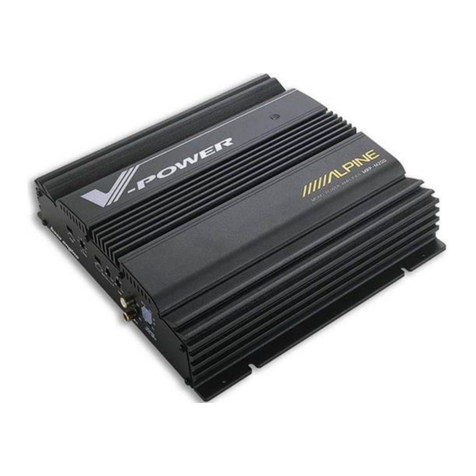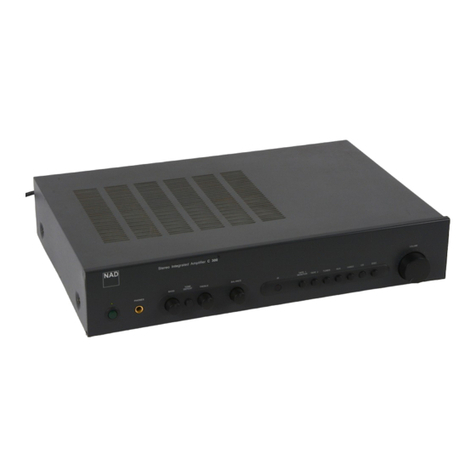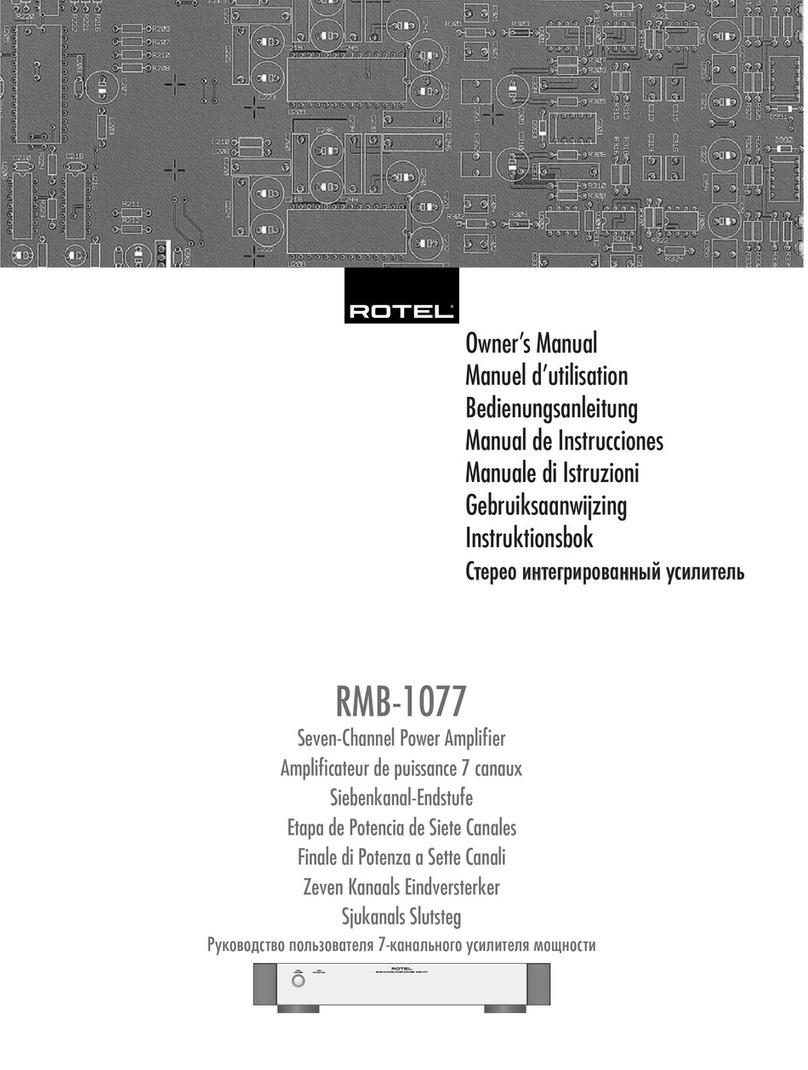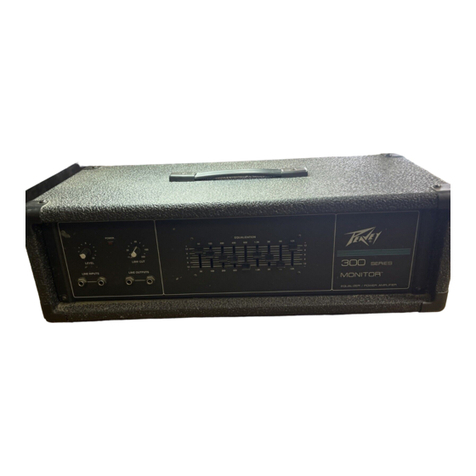
POWER LINE VOLTAGE SELECTOR
The 128B Power Amplifier is equipped with two line voltage taps
so that it may be operated at the most optimum setting in relation to
the supply line. Selection of the tap is by means of a switch labeled
"Line" located on the chassis surface adjacent to the power trans-
former (Figure 2). As shipped, the switch is in the 117 volt to 125
volt position and secured with a locking plate. Unless measurements
indicate conclusively that the power line voltage at the installation
runs below 117 volts, the line connection should not be changed. The
line switch is secured in the same manner as described in the high
pass filter paragraph. It is recommended that the apparatus always
be operated with the locking plate in place.
MECHANICAL INSTALLATION
The cabinet or other enclosure in which the 128B Amplifier is mounted
should have adequate provisions for air entry and exit. The amplifier
is constructed with a low top silhouette that provides a minimum of
impediment to the flow of air around the vacuum tubes and other
components. The shield which separates the power tubes from each
other and the power transformer is heated by radiation and in turn
provides a large area in the air stream with which to give up this
heat. When the amplifier is placed immediately above other heat-
producing apparatus, the ambient temperature of its immediate
environment is increased and can result in reduced component life.
Should this occur, and the thermal circuit breaker becomes operative,
provisions should be made to reduce the temperature in the general
area. This can be done by spacing the amplifier away from other heat-
producing apparatus by inserting the Altec 10399 13/4" perforated
panel above and below the 128B.
INPUT CONNECTIONS
Two pairs of input connections are provided on the 128B Amplifier
(Figure 2) Terminals 1 and 2, which connect directly to the input
potentiometer, are provided for unbalanced high impedance sources,
and to bridge unbalanced low impedance lines having signal voltage
of .9 or higher. Terminal 2 is grounded. Terminals 3 and 4 connect
to a standard octal socket into which an Altec 15095 line matching
transformer can be inserted. The 15095 transformer provides isolated
source impedances of 150 and 600 ohms and accommodates levels
up to +15 dbm. When the unit is shipped, the 600 ohm connection is
available at Terminals 3 and 4. Straps on the octal socket must be
changed in order to make use of the 150 ohm impedance. Strapping
information is shown on the schematic diagram (Figure 5).
OUTPUT CONNECTIONS
Connections for speakers of 4, 8, and 16 ohms are provided on the
output terminal strip (Figure 2). The 124 ohm tap provided is the
nominal 70 volt line connection. In matching speakers to the ampli-
fier, use the output tap which most nearly equals the speaker im-
pedance. If the load impedance falls between two output terminal
values, use the terminal of lower impedance.
70 volt line: The 70 volt distribution system permits connection of a
large number of speakers, each operating at a selected power level
without the necessity for computing load and amplifier impedances.
In this system, each speaker is equipped with a transformer (Altec
15000 series transformers) having a number of taps rated in terms
of power. The tap is selected which gives the power desired for the
individual speaker. The total of the power settings for all speakers
should be equal to, or less than, the amplifier power rating. The
128B Amplifier is equipped with outputs to drive either a 70 volt
line or a 25 volt line. The output windings are ungrounded and may,
therefore, be used to run balanced lines if required. Care should be
exercised in the wiring of the rack to isolate speaker lines from
input lines since they both appear on the same end of the amplifier.
TEST AND SERVICING
Should the amplifier become inoperative, it should first be deter-
mined that the power supply line is continuing to deliver current. If
the thermal breaker within the transformer has operated, the meter
illumination will have darkened and the red warning light on the
front panel (Figure 1) will be illuminated. Returning the amplifier
to normal temperature will correct this problem. If the meter is
illuminated but the amplifier fails to pass signal, the panel meter
may be used to determine which tube or stage has failed. Vacuum
tube V1 is a dual triode unit. If the first section of this tube becomes
inoperative, the meter placed in the V1 position will read full scale.
Should the second section of V1 fail, the meter will read zero. V2
is likewise a dual triode. Should only one section of this tube fail,
the meter will read about half scale. Should both sections fail, the
meter will read zero. In positions V3 and V4, zero meter indication
will result from an inoperative tube and full scale indication will
result from a tube having a shorted element. Failure of the meter
to indicate in any of the tube positions at the same time that the
meter is illuminated would indicate failure of the rectifier V5. In
conducting tests in order to determine conformance of the amplifier
to the performance specifications, the exact line voltage for the line
switch setting must be used. In the 117 to 125 volt position, the
exact line voltage is 125 volts, and in the 105 to 117 volt setting,
the exact line voltage is 117 volts.
Page 2
